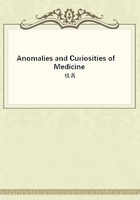
第41章
The coilings of the cord are not limited to compression about the extremities alone, but may even decapitate the head by being firmly wrapped several times about the neck. According to Ballantyne, there is in the treatise De Octimestri Partu, by Hippocrates, a reference to coiling of the umbilical cord round the neck of the fetus. This coiling was, indeed, regarded as one of the dangers of the eighth month, and even the mode of its production is described. It is said that if the cord he extended along one side of the uterus, and the fetus lie more to the other side, then when the culbute is performed the funis must necessarily form a loop round the neck or chest of the infant. If it remain in this position, it is further stated, the mother will suffer later and the fetus will either perish or be born with difficulty. If the Hippocratic writers knew that this coiling is sometimes quite innocuous, they did not in any place state the fact.
The accompanying illustrations show the different ways in which the funis may be coiled, the coils sometimes being as many as 8.
Bizzen mentions an instance in which from strangulation the head of a fetus was in a state of putrefaction, the funis being twice tightly bound around the neck. Cleveland, Cuthbert, and Germain report analogous instances. Matthyssens observed the twisting of the funis about the arm and neck of a fetus the body of which was markedly wasted. There was complete absence of amniotic fluid during labor. Blumenthal presented to the New York Pathological Society an ovum within which the fetus was under going intrauterine decapitation. Buchanan describes a case illustrative of the etiology of spontaneous amputation of limbs in utero Nebinger reports a case of abortion, showing commencing amputation of the left thigh from being encircled by the funis.
The death of the fetus was probably due to compression of the cord. Owen mentions an instance in which the left arm and hand of a fetus were found in a state of putrescence from strangulation, the funis being tightly bound around at the upper part. Simpson published an article on spontaneous amputation of the forearm and rudimentary regeneration of the hand in the fetus. Among other contributors to this subject are Avery, Boncour, Brown, Ware, Wrangell, Young, Nettekoven, Martin, Macan, Leopold, Hecker, Gunther, and Friedinger.
Wygodzky finds that the greatest number of coils of the umbilical cord ever found to encircle a fetus are 7 (Baudelocque), 8(Crede), and 9 (Muller and Gray). His own case was observed this year in Wilna. The patient was a primipara aged twenty. The last period was seen on May 10, 1894. On February 19th the fetal movements suddenly ceased. On the 20th pains set in about two weeks before term. At noon turbid liquor amnii escaped. At 2P.M., on examination, Wygodzky defined a dead fetus in left occipito-anterior presentation, very high in the inlet. The os was nearly completely dilated, the pains strong. By 4 P.M. the head was hardly engaged in the pelvic cavity. At 7 P.M. it neared the outlet at the height of each pain, but retracted immediately afterward. After 10 P.M. the pains grew weak. At midnight Wygodzky delivered the dead child by expression. Not till then was the cause of delay clear. The funis was very tense and coiled 7 times round the neck and once round the left shoulder; there was also a distinct knot. It measured over 65 inches in length.
The fetus was a male, slightly macerated. It weighed over 5pounds, and was easily delivered entire after division and unwinding of the funis. No marks remained on the neck. The placenta followed ten minutes later and, so far as naked-eye experience indicated, seemed healthy.
Intrauterine fractures are occasionally seen, but are generally the results of traumatism or of some extraordinary muscular efforts on the part of the mother. A blow on the abdomen or a fall may cause them. The most interesting cases are those in which the fractures are multiple and the causes unknown.
Spontaneous fetal fractures have been discussed thoroughly, and the reader is referred to any responsible text-book for the theories of causation. Atkinson, De Luna, and Keller report intrauterine fractures of the clavicle. Filippi contributes an extensive paper on the medicolegal aspect of a case of intrauterine fracture of the os cranium. Braun of Vienna reports a case of intrauterine fracture of the humerus and femur.
Rodrigue describes a case of fracture and dislocation of the humerus of a fetus in utero. Gaultier reports an instance of fracture of both femora intrauterine. Stanley, Vanderveer, and Young cite instances of intrauterine fracture of the thigh; in the case of Stanley the fracture occurred during the last week of gestation, and there was rapid union of the fragments during lactation. Danyau, Proudfoot, and Smith mention intrauterine fracture of the tibia; in Proudfoot's case there was congenital talipes talus.
Dolbeau describes an instance in which multiple fractures were found in a fetus, some of which were evidently postpartum, while others were assuredly antepartum. Hirschfeld describes a fetus showing congenital multiple fractures. Gross speaks of a wonderful case of Chaupier in which no less than 113 fractures were discovered in a child at birth. It survived twenty-four hours, and at the postmortem examination it was found that some were already solid, some uniting, whilst others were recent. It often happens that the intrauterine fracture is well united at birth. There seems to be a peculiar predisposition of the bones to fracture in the cases in which the fractures are multiple and the cause is not apparent.